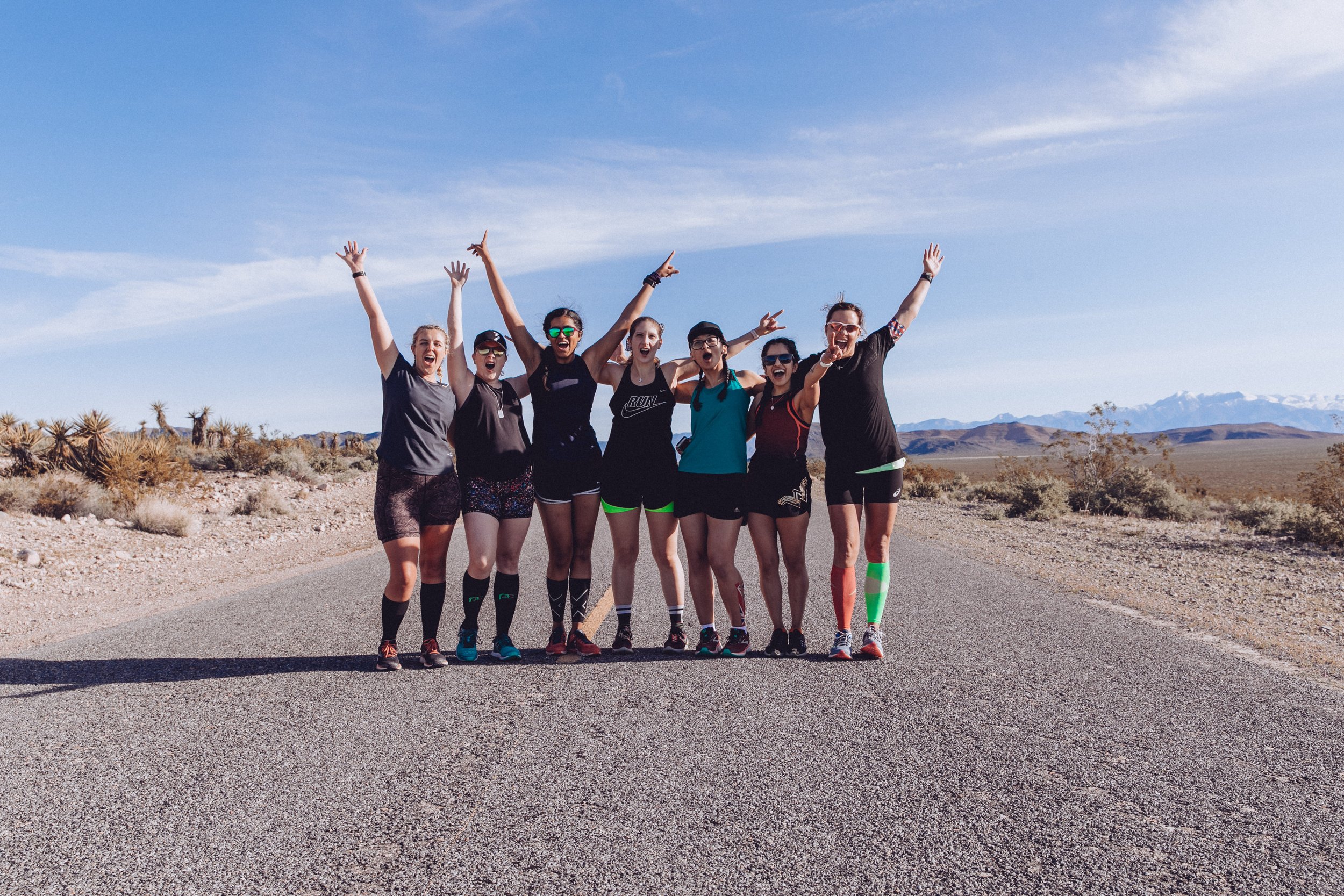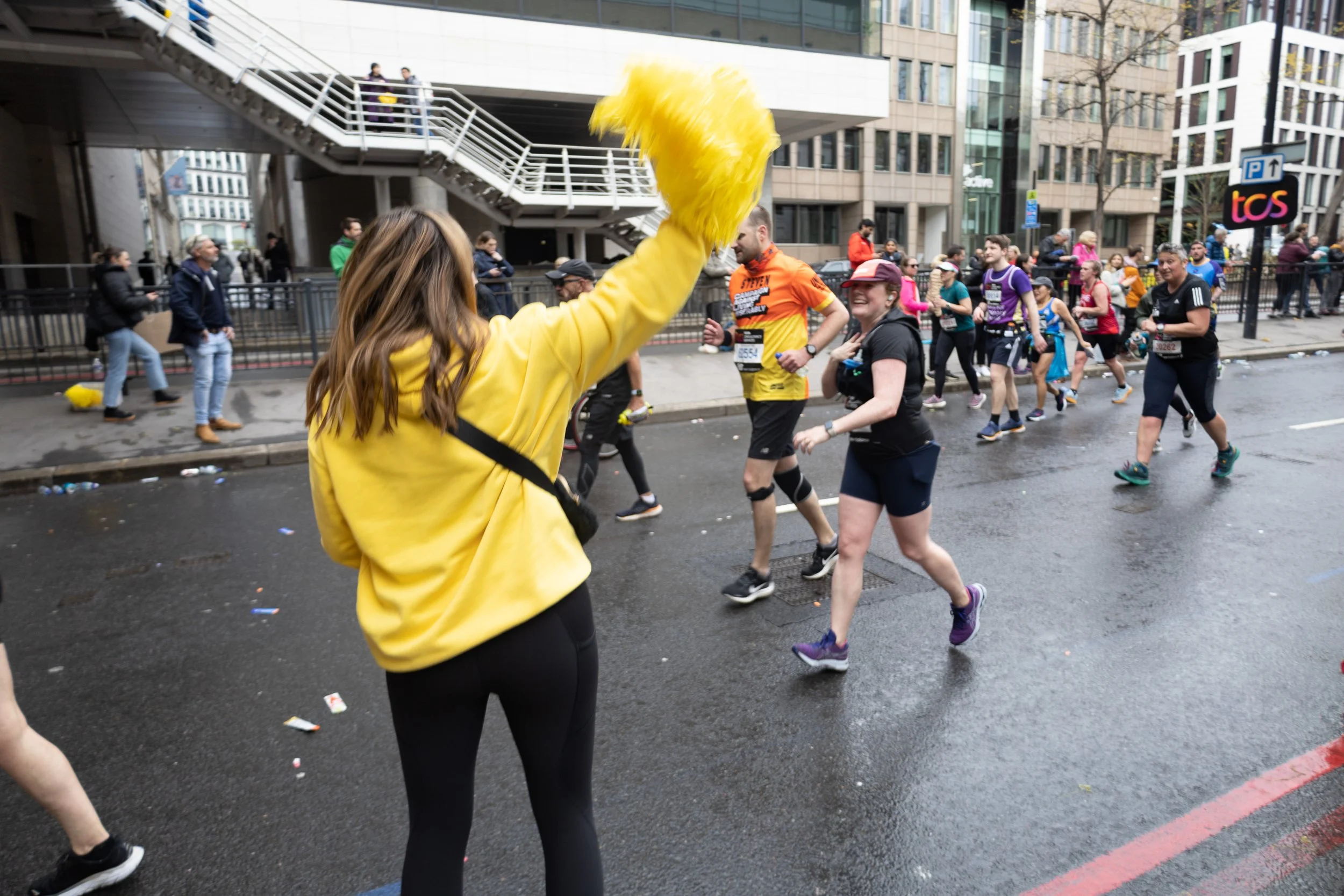The Gender Participation Gap At London Marathon 2023
I’m going to preface this post by saying that I’m working with very limited data and that my comments shouldn’t be taken as definitive, however they are underpinned by academic research. You can find out more about my credentials as a researcher here.
Statistics published by London Marathon suggest that nearly 10,000 fewer women than men participated in the 2023 edition of the race and it’s got a lot of people asking both ‘why' and ‘what can we do to change things’.
I always find posts like this hard to write. While I’m a researcher working on a PhD in the sociology of sport that specifically looks at women’s participation in endurance running, I tend to spend a lot of my time deep in the minutiae of issues and can find it challenging to distill complex and multi-faceted issues into short, digestible posts. I really hope I’ve hit the mark, but please do let me know if you have any questions!
The Statistics
TSC London Marathon 2023 Mass Participation Stats
The overall participation gap
The big thing that jumps out of the stats published by London Marathon is that c.9, 800 fewer women than men participated in the mass event in 2023. That’s a difference of 17%.
According to the Active Lives Survey 2021-22 men are 5% more likely to participate in physical activity than women, and the gap at London Marathon 2023 was much more significant than this. The Active Lives Survey isn’t a perfect measure, ‘activity’ is defined as ‘moderate activity’ performed in bouts of 10 minutes or more, which really isn’t all that much in real terms and definitely not equivalent to marathon training. With this in mind any direct comparisons need to be taken with a pinch of salt.
RunRepeat have published global statistics looking at women’s participation in running. These stats are a little old (2019) and it’s global so again direct comparisons are tricky, but they still provide a useful illustration. According to RunRepeat in total women’s participation has risen from under 20% in 1986 to just above 50% in 2018. So far, so positive, but when you look at the numbers broken down by distance things look a little different.
The Participation Gap by Distance
Trends in Women’s Running Participation by Distance via. RunRepeat.com
Based on the stats from RunRepeat, while overall participation has increased over time, there’s still a significant gap when it comes to the proportion of women participating in longer races.
The Participation Gap By Age
Where the London Marathon 2023 data gets really interesting is the differences in participation by age group. What immediately jumps out to me is that the number of men and women running is broadly similar if the participants are under 30, but once they hit 30 the gap starts to widen.
This reflects trends identified by RunRepeat which shows that women who run tend to be younger and have a median age of 36.
Age Distribution of Women Runners via. RunRepeat.com
The reason RunRepeat gives for this data skew is that it’s because of childbirth and that women continue to shoulder much of the burden of child rearing, and I’m inclined to agree.
Why The Gender Participation Gap Exists
General Barriers to Participation
The first thing to consider are the general barriers to participation in sport. I’ve written a pretty comprehensive blog post about this already, and you can read it here, but in short there are a myriad of reasons why people don't participate in physical activity - they're embarrassed, they've had bad experiences in the past, they're busy, they don't know how to access activities, they're intimidated, they don't believe physical activity is 'for' them, they don't have the resources to access it. The list goes on and on, and all these reasons are underpinned by some pretty hefty social issues as well. I am forever saying that participation is complex, and that's because it is.
Running is a particularly interesting sport to look at in this context. Dr Neil Baxter (another sports sociologist) observed a paradox between running and class. While running is a relatively cheap and ostensibly accessible sport, its participation base is predominantly middle class. This suggests that privilege has an impact on participation. Intrinsically linked to privilege is the fact that at a very basic level participation in physical activity, and particularly organised sports, is a luxury that relies on people having discretionary money and time. Active participation correlates positively with income, education and occupational status (Coakley and Pike, 2014) as over time economic inequality in society leads to class-based lifestyles that have varying priorities. For example, if you’re struggling to make ends-meet, working a physically demanding job or have caring responsibilities you’re less likely to have the money to spend on sports equipment or the time to invest in physical activity because you need to invest those limited resources elsewhere.
Gender barriers to Participation
I’ve written a post previously about the impact of gender ideology in sport, so it might be worth pausing to go and read that first, you can find it here.
In short, gender (based on the binary sex classification of male/female) is one of the principle means by which society is organised and the expectations we have of individuals ‘are shaped by, and in turn shape, a host of ideologies of binary differences in ability by gender’ (Wachs, 2002). Gender ideology is so pervasive that we don’t always realise we’re influenced by it, and it is so ingrained it can take generations of action to effect change. Sport is an area where these expectations have had a significant influence.
Neil observed that committed runners - those who are most likely to pursue challenges like a marathon - are more likely to be younger and male. For example, the proportion of men who run more than seven times a week is 3.3%, four times that of women who run (0.8%). Obviously running 7 times a week is A LOT, even for a marathon runner, but it gives a helpful insight as to why the stats from London Marathon 2023 look the way that they do.
So why might fewer women over 30 have participated in London Marathon 2023?
Motherhood
According. to the ONS, ther average age of mothers in England and Wales in 2020 was 30.7 years old - right when the participation gap in London Marathon 2023 appears. I don’t think this is a coincidence.
Pregnancy and childbirth have a huge impact on women’s bodies and it can take time to recover from having a baby which might mean women have to take a break for awhile. However, there’s more to this than physically recovering from birth.
According to data from YouGov, 38% of women who work full-time and have a partner say that they do more of the housework and childcare - just 9% of working men with partners said the same. If women are taking on the lions share of caring responsibilities that will eat into the time that they have available to spend on activities like running. Data from the US states that around 39% of working mothers report engaging in no bouts of strenuous exercise each week, and if they can’t manage that when are they going to have the time to train for a marathon?
Building on this is the challenge of accessing quality childcare, a depressing reality in the UK. From my own experience the only reason I was able to train effectively for London Marathon 2023 was because I could run while my daughter was at childcare because my work is flexible enough to allow that. Not everyone has that enormous privilege, and if you’re trying to squeeze your runs in around the rest of life training for a marathon might not be worth the stress, or even be possible.
deferral policies
One thing that might make a difference to the gender participation gap after 30 is the introduction of a maternity deferral policy. This new policy allows women to defer for up to 3 years due to pregnancy - I benefitted from it as I was able to defer for 2 years, and I wonder if we’ll see a change in the numbers over the next few years as more women enter knowing that if they become pregnant their ballot place will be protected.
Personal Safety
In a survey of over 2,000 runners by Runner’s World and Women’s Health (2021) around 60% of women said that they’d been harassed when running - that’s 1,200 women who have experienced catcalling, being followed, being flashed and assault while simply trying to enjoy a run. In response to the survey 25% of women reported that they were regularly subject to sexist comments or unwanted sexual advances and 6% said that they had felt threatened to such an extent by harassment while running that they feared for their lives.
Street harassment creates a culture of fear. Even if harassment hasn’t pushed women to stop running, it’s likely to have influenced when and where they run. Runner’s World and Women’s Health found 91% of women have changed their behaviour due to fear of harassment with 34% of women surveyed saying they only run when its light and 54% saying they avoided running in certain places after dark, as we approach the autumn and the days get shorter you can see how limiting this could become. Fear is very real for women runners, and just 13% of those surveyed said they’d never feared for their safety while running. Assessing the threats and planning how to run ‘safely’ every time you put on your trainers is exhausting, it’s no wonder women decide it’s just too much.
If you think about when London Marathon traditionally falls participating requires women to train over winter when it’s harder to negotiate safety fears, so it’s possible this is putting women off.
The Confidence Gap
There’s evidence to suggest that women are less self-assured than men, and that to be successful confidence is just as important as competence. Could this have an impact on whether women choose to take on the challenge of London Marathon?
The idea of the confidence gap has it’s critics and it’s arguable that it’s really just women realising that their insecurity is well earned (this article is great), but it is a useful perspective when it comes to women’s decisions around things like this. Could it be the case that women simply aren’t entering unless they’re 100% sure that success is within their gasp?
we don’t know for sure but there is hope
I can hypothesis all day long about why fewer women over 30 might have participated in London Marathon 2023, but without further research I don’t really know what’s going on. This is an area that needs more understanding, both in the context of London Marathon specifically, and sport more generally.
There are a couple of glimmers of hope coming through though. It’s been shared with me that the number of women over 50 participating has increased year on year, which is amazing. There’s also the fact that London Marathon now splits Good For Age places 50:50 between men and women, hopefully in the future this will extend to mass ballot entries too.










